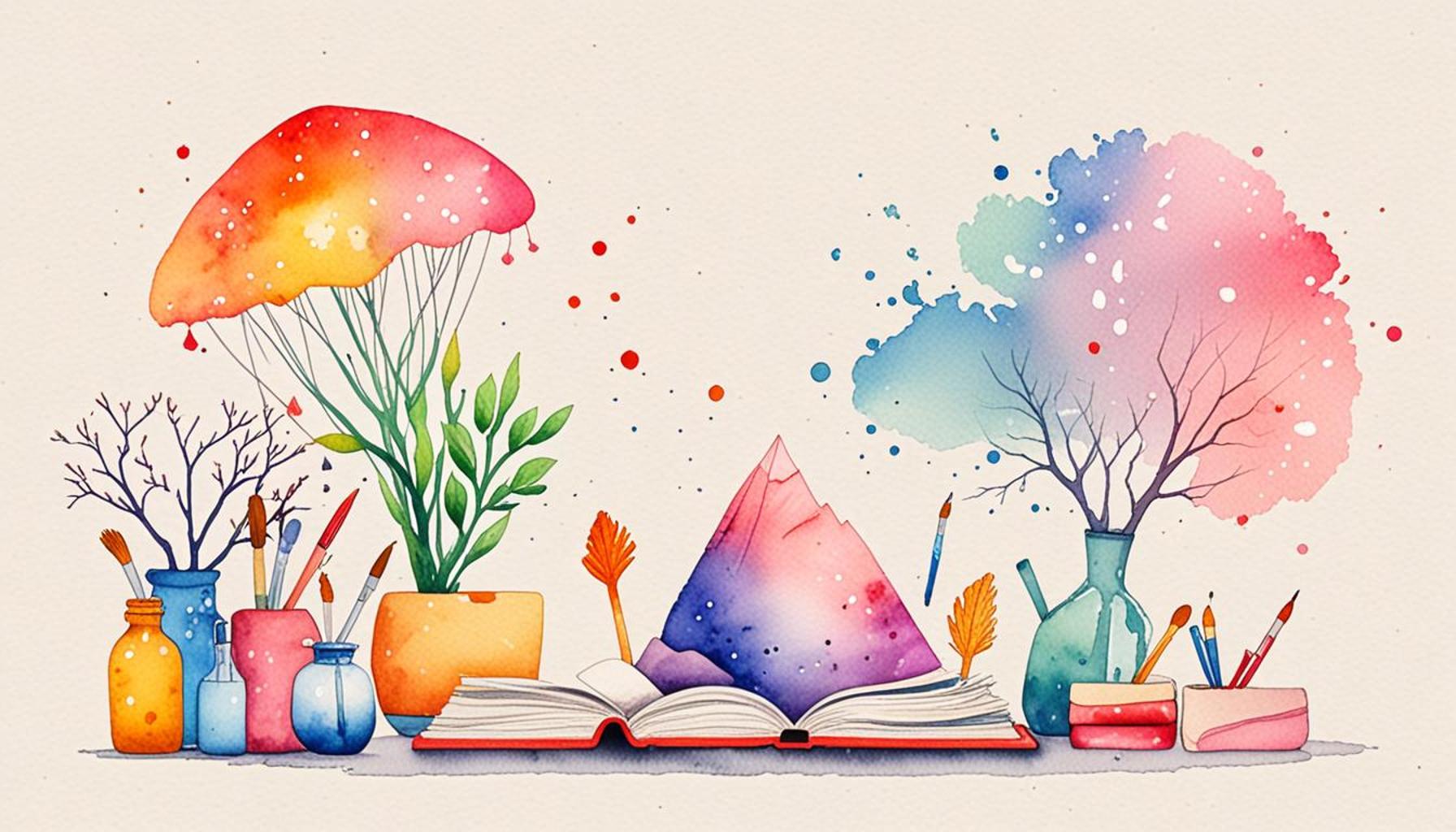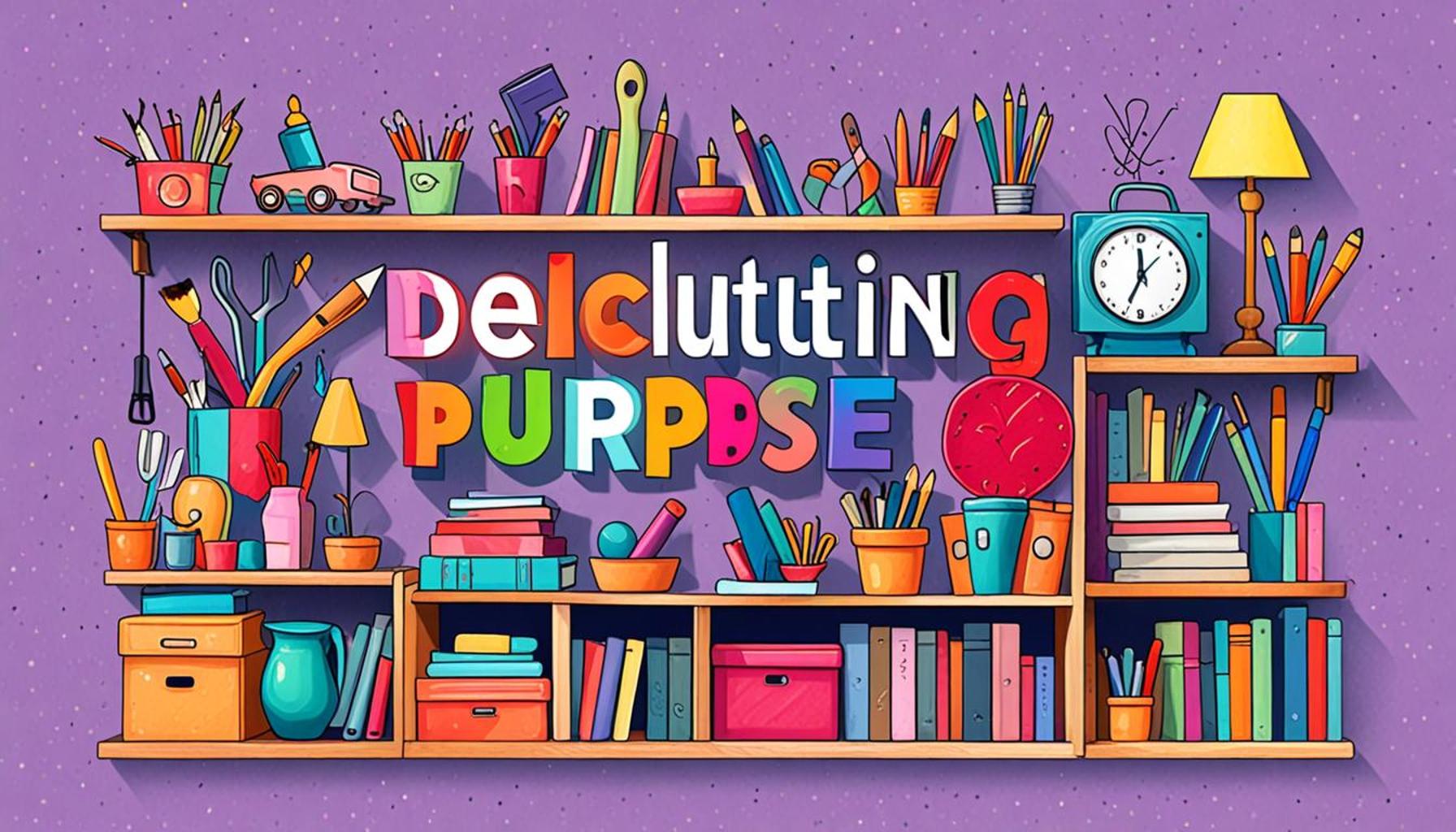Exploring the KonMari Method: How to Let Go Efficiently

Understanding the KonMari Method
The KonMari Method revolutionizes the way we approach decluttering by shifting our focus from mere organization to emotional resonance. Developed by Marie Kondo, a Japanese tidying expert, this approach has gained immense popularity in the United States, with many individuals citing deep emotional and mental transformations resulting from its practice. It encourages a profound connection with your belongings, prompting you to ask a simple yet powerful question: Does this spark joy?
One of the foundational aspects of the KonMari Method is its emphasis on guided decluttering. Kondo’s approach is detailed and structured, allowing individuals to methodically work through their possessions. Unlike traditional methods that often suggest decluttering by room, the KonMari Method categorizes items, creating a more holistic view of what you own. For instance, you might start with clothing, followed by books, and then sentimental items, allowing for a comprehensive evaluation of your belongings in a specific category.
Category-Based Sorting
This category-based sorting can be particularly enlightening. Imagine opening your closet to face the reality of your wardrobe – an array of clothing that perhaps no longer fits your current lifestyle. By addressing clothing first, many find it easier to let go of what no longer serves them. Kondo advocates for physically holding each item to evaluate its joy-sparking potential, enabling a more personal connection to your possessions. Real-life examples abound; a busy professional in New York City may find that their collection of formal wear, once deemed essential, no longer aligns with their more casual lifestyle, thus making it easier to say goodbye to those items.
Mindful Reflection
Equally crucial is the principle of mindful reflection. This step emphasizes the importance of gratitude. As you sift through your belongings, take a moment to appreciate each item’s contribution to your life, whether it be a cherished book that provided comfort during a tough time or a kitchen gadget that’s seen countless family meals. This practice fosters a sense of acknowledgment and respect for your items before deciding to part ways with them. As a result, it leads to a more disciplined and intentional approach to future purchases.
The essence of the KonMari Method not only promotes tidiness but also encourages an overall shift in perspective towards material possessions. By embracing this lifestyle, many individuals in the United States report not only having cleaner spaces but also experiencing decreased stress levels and enhanced clarity of mind. Consider a family that has integrated the KonMari Method into their home, where previously cluttered countertops are now serene spaces that inspire creativity and focus.
Are you ready to embark on your decluttering journey? By understanding and implementing the core principles of the KonMari Method, you can transform not just your physical environment, but also your mental and emotional landscape, cultivating a rewarding and joyful living space.
EXPLORE MORE: Click here for insights on integrating minimalist practices</p
Embracing the Transformative Power of Decluttering
As you delve into the KonMari Method, it becomes evident that letting go of possessions is not merely about creating space; it is a journey of self-discovery and emotional release. By embracing the systematic approach Kondo has crafted, individuals across the United States are finding that the act of decluttering is a pivotal step towards a more intentional and fulfilling life.
Connecting with Your Belongings
At the heart of the KonMari Method lies the concept of truly connecting with your belongings. Instead of viewing items as disposable or merely functional, Kondo encourages individuals to appreciate their stories and the roles they have played in our lives. By thoughtfully considering each item, you can uncover the emotional attachments that may have led to an accumulation of clutter.
For example, a young adult might struggle with letting go of college textbooks or mementos from friends, fearing that discarding them will erase cherished memories. However, by asking, “Does this spark joy?” individuals can evaluate if these items still serve a purpose in their current life. This shift in perspective, from attachment to appreciation, is a key component in the KonMari Method, allowing for a more judicious approach to belongings.
Creating a Decluttering Checklist
To facilitate the decluttering process, creating a decluttering checklist can be tremendously helpful. Here are the main categories to guide your journey:
- Clothing: Start with clothing to experience immediate gratification from successful decluttering.
- Books: Evaluate the collection of books on your shelves, considering your reading habits and new interests.
- Documents: Sort through papers and manage essential documents, leaving behind only what is necessary.
- Miscellaneous Items: Gather smaller items, such as gadgets or decorations, and thoughtfully assess their joy-sparking potential.
- Sentimental Items: Tackle emotional keepsakes last, as they often require deeper reflection and can be the most challenging to part with.
By systematically progressing through these categories, participants often experience a sense of accomplishment with each completed section. While organizing, it is essential to focus on how each item serves your current lifestyle, leading to a more conscious and aware relationship with your possessions.
Building Momentum
It’s common to feel overwhelmed at the prospect of decluttering, especially when faced with years of collected items. However, Kondo’s method provides a structured path forward. By concentrating efforts on a single category at a time, you can harness the transformative momentum that comes from experiencing visible change in your space. For instance, a family in Los Angeles might find that after clearing out a closet full of unused toys, not only do they gain physical space, but they also foster a newfound sense of connection as they engage more meaningfully with the toys their children truly cherish.
As you embark on this decluttering odyssey, remember that the KonMari Method isn’t just about our belongings – it’s about understanding our relationship with them, letting go of the past, and making room for what truly brings us joy.
Exploring the KonMari Method: How to Let Go Efficiently
The KonMari Method, developed by Marie Kondo, has gained remarkable popularity for its unique approach to decluttering and organizing. At its core, this method encourages individuals to keep only those items that “spark joy.” By doing so, followers can not only tidy their spaces but also enhance their emotional well-being.
One of the central concepts is the idea of mindful decluttering, which transforms the act of letting go into a heartfelt process. Unlike traditional methods that focus on merely discarding items, the KonMari Method empowers individuals to engage with their possessions on a deeper level, leading to lasting change in their living environments.
Additionally, this method incorporates a category-based organization system, organizing items in a way that significantly reduces the chances of accumulating clutter again. By tackling categories such as clothing, books, and sentimental items one at a time, practitioners can efficiently manage their possessions without feeling overwhelmed.
| Advantages | Impact on Life |
|---|---|
| Emotional Clarity | Helps individuals process emotions attached to belongings, reducing guilt associated with letting go. |
| Sustainable Living | Encourages responsible consumption by promoting thoughtful purchases and creating lasting habits. |
As you explore the benefits of the KonMari Method, you will find that it offers not just a solution for physical clutter, but also a pathway to emotional liberation. Engaging with this method encourages a lifestyle change, promoting a sense of peace and order in your surroundings.
DISCOVER MORE: Click here to enhance your virtual organization skills
Navigating Emotional Hurdles in the Decluttering Process
While the KonMari Method champions the joy of letting go, it is not without its emotional challenges. Recognizing and navigating these emotional hurdles is essential for successful decluttering. As individuals embark on their personal organizing journey, they may encounter deep-seated thoughts and feelings tied to their possessions. It might be helpful to understand these emotions and how they affect the decision to keep or discard items.
Facing the Fear of Letting Go
One of the most significant fears surrounding decluttering is the anxiety associated with letting go of items that carry sentimental value. Research from psychological studies suggests that the act of discarding can evoke feelings of loss or regret, as people struggle to part with items that hold memories. For instance, a parent might hesitate to dispose of their child’s first pair of shoes or a wedding dress, fearing these items represent their past identities.
To overcome this fear, Kondo encourages a mindset shift: instead of viewing letting go as a loss, consider it a chance to honor past experiences without holding onto physical items. By embracing the idea that memories reside within you and not in the objects, you can alleviate the burden of guilt and reluctance. Moreover, documenting cherished memories through photographs can serve as a comforting compromise for those afraid to part with physical reminders.
Building a Support System
Decluttering becomes more manageable with the support of friends or family who understand the goals of the KonMari Method. Having a dedicated support system can provide encouragement and accountability, especially during challenging moments. Consider scheduling a “decluttering party” where friends join in to help sort, discuss, and celebrate the progress made.
Additionally, communities across the United States, from online forums to local meet-ups, focus on decluttering and minimalism; they can provide invaluable resources and camaraderie. By sharing experiences and challenges with others, participants often gain new insights and renewed motivation.
Utilizing Decluttering Tools
Incorporating decluttering tools can enhance the effectiveness of the KonMari Method, making it easier to sort through belongings while keeping the process engaging. Consider using storage solutions like decorative bins or shelves that promote organization while also reflecting personal style. App-based inventory lists and tracking solutions can help keep tabs on progress and visualize the end goal.
Moreover, the use of a “donate box” can facilitate an efficient letting-go process. Place a box in a designated area of your home specifically for items you no longer need. This items-to-go box can serve as a tangible reminder of your commitment to decluttering and allows you to feel accomplished as it fills up over time.
Transforming Your Space and Mindset
As individuals actively embrace the KonMari Method, the rewards extend beyond just a tidy home. Studies have indicated that a clutter-free environment can lead to improved mental health and productivity. In bustling cities like New York or San Francisco, where space is limited and often chaotic, decluttering can profoundly impact one’s sense of well-being.
Transforming your space through systematic decluttering not only fosters a serene environment but also allows you to reimagine how you want to live. Every item you choose to keep or let go shapes the atmosphere of your personal sanctuary. Ultimately, by engaging fully in the KonMari process, individuals across the United States can experience the liberation that comes from curating a life centered around joy and purpose.
DISCOVER MORE: Click here to delve into mindfulness techniques
Embracing a Clutter-Free Life with the KonMari Method
In conclusion, the KonMari Method offers a transformative approach to decluttering that goes beyond mere tidiness. By fostering a mindset that emphasizes joy and intentionality, individuals can navigate the emotional complexities associated with letting go of possessions. This method not only prioritizes what inspires happiness but also empowers individuals to detach from items that no longer serve their purpose.
The journey of decluttering may initially seem daunting, particularly when faced with the fear of parting with cherished memories. However, by embracing the philosophy that memories are everlasting and can exist outside the confines of physical items, one can embrace change with greater ease. Establishing a supportive community and utilizing effective decluttering tools can further enhance this experience, creating a sense of accountability and motivation.
Ultimately, adopting the KonMari Method catalyzes the creation of a serene and organized space that fosters personal growth and mental clarity. By focusing on joy, both physical and emotional burdens can be alleviated, allowing individuals across the United States to envision a more fulfilling lifestyle. As you embark on your decluttering journey, remember that the path to embracing a clutter-free life is not just about discarding items but about curating an environment that celebrates who you are and who you wish to become.


